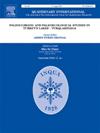11000 - 2300 BP长江下游地区生存经济变化及其影响因素:动植物考古证据
IF 1.8
3区 地球科学
Q3 GEOGRAPHY, PHYSICAL
引用次数: 0
摘要
长江下游地区(LYRR)是世界上最古老的水稻农业中心之一,尽管这种生存系统的长期轨迹以及影响这一轨迹的环境和文化因素仍未得到充分阐明。本文利用已发表的76个考古遗址的植物考古和动物考古证据,整合了古气候、古环境和其他考古数据,概述了LYRR生存经济在11000 - 2300 BP之间的发展轨迹。综合数据表明,在11000 ~ 6000 BP之间,LYRR在驯化初期以采集、狩猎和捕鱼为主,以水稻种植为辅。公元前6000-4000年间,人类开始转向水稻农业生产和畜牧业,并辅以采集、狩猎和捕鱼。到公元4000-2300年,这一自给系统转变为多样化的农业和狩猎经济,并以采集、畜牧业和渔业为补充。地形、地貌、气候、海平面波动、人口增长等多种环境和社会因素共同影响了过去LYRR民族各时期生存经济的形成。在11000 - 6000 BP之间,温暖湿润的气候和地理环境严重影响了LYRR的生存。在6000-4000 BP之间,温暖湿润的气候、缓慢的海平面上升、长江三角洲的形成、人口的增长和共同的信仰体系是对自给经济的主要影响。到4000-2300 BP,更干燥的气候和当地的地貌环境在形成多样化的自给经济中发挥了主导作用。本文章由计算机程序翻译,如有差异,请以英文原文为准。
Subsistence economic changes and their influencing factors in the lower Yangtze river region during 11,000–2,300 BP: archaeobotanical and zooarchaeological evidence
The Lower Yangtze River Region (LYRR), is one of the oldest centers of rice agriculture in the world, though the long-term trajectory of this subsistence system and the environmental and cultural factors that influenced the trajectory remain to be fully elucidated. Drawing on published archaeobotanical and zooarchaeological evidence from 76 archaeological sites, this paper integrates paleoclimatic, paleoenvironmental, and other archaeological data, providing an overview of the trajectory of LYRR subsistence economies between 11,000–2300 BP. The integrated data indicates that between 11,000–6000 BP in LYRR, subsistence practices were mainly based on gathering, hunting and fishing, supplemented by rice cultivation during its incipient domestication. Between 6000–4000 BP a shift to rice agricultural production and animal husbandry took place, supplemented by gathering, hunting, and fishing. By 4000–2300 this subsistence system transformed into a diversified agricultural and hunting economy, supplemented by gathering, animal husbandry and fishing. Multiple environmental and social factors such as topography, landforms, climate, sea level fluctuations and population increase have jointly influenced the formation of subsistence economy in various periods of past LYRR peoples. Between 11,000–6000 BP the warm and humid climate and the geographical environment heavily influenced LYRR subsistence. Between 6000–4000 BP, a combination of the warm and humid climate, slowing sea level rise, the formation of the Yangtze River Delta, population growth, and shared belief systems were the primary influences on subsistence economies. By 4000–2300 BP, a colder-drier climate, and local geomorphological environments played a dominant role in the formation of a diversified subsistence economy.
求助全文
通过发布文献求助,成功后即可免费获取论文全文。
去求助
来源期刊

Quaternary International
地学-地球科学综合
CiteScore
5.60
自引率
4.50%
发文量
336
审稿时长
3 months
期刊介绍:
Quaternary International is the official journal of the International Union for Quaternary Research. The objectives are to publish a high quality scientific journal under the auspices of the premier Quaternary association that reflects the interdisciplinary nature of INQUA and records recent advances in Quaternary science that appeal to a wide audience.
This series will encompass all the full spectrum of the physical and natural sciences that are commonly employed in solving Quaternary problems. The policy is to publish peer refereed collected research papers from symposia, workshops and meetings sponsored by INQUA. In addition, other organizations may request publication of their collected works pertaining to the Quaternary.
 求助内容:
求助内容: 应助结果提醒方式:
应助结果提醒方式:


